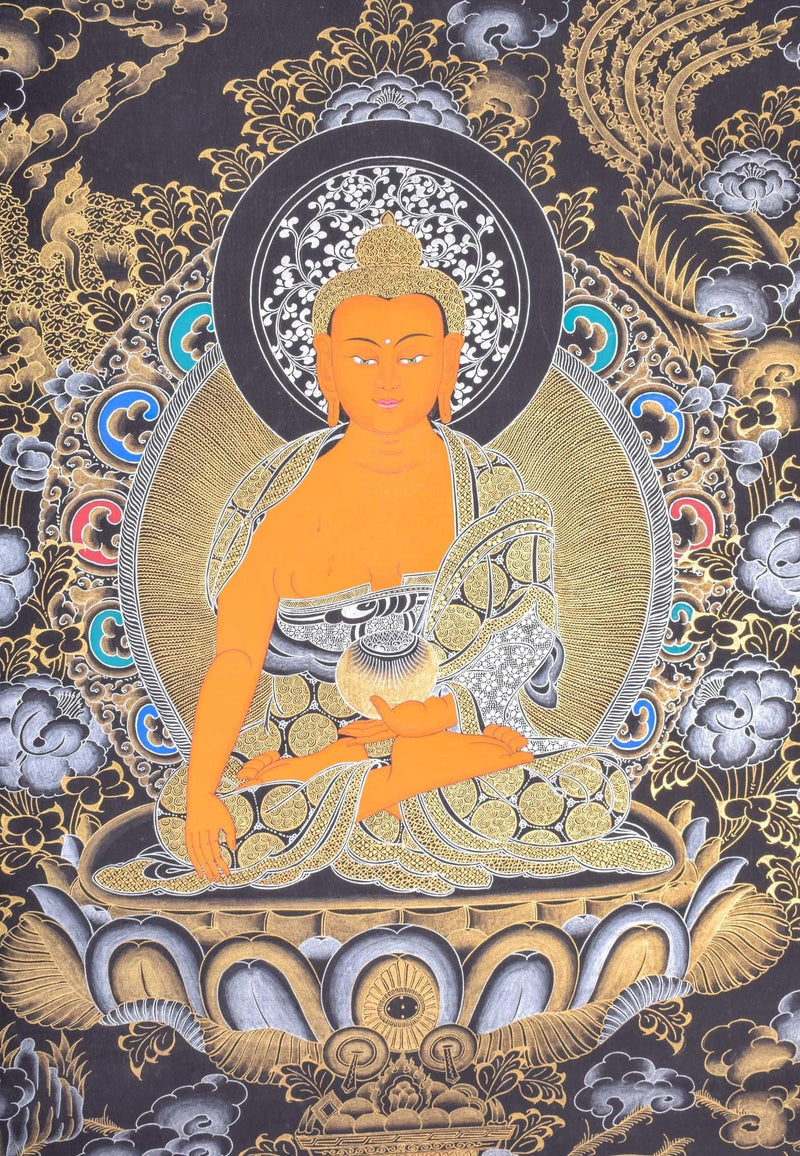The trikaya is a fundamental doctrine within Mahayana and Vajrayana Buddhism that delineates the multidimensional nature of a Buddha's existence. This concept posits that a Buddha has three distinct bodies or aspects, each representing a different facet of enlightenment.
Trikaya (Sanskrit: three bodies), in Mahayana Buddhism, is the concept of the three bodies, or modes of being, of the Buddha: the Dharmakaya (body of essence), the unmanifested mode, and the supreme state of absolute knowledge; the Sambhogakaya (body of enjoyment), the heavenly mode; and the Nirmanakaya (body of transformation).
Why is Trikaya important? In essence, the Trikaya doctrine offers a profound framework for understanding the diverse dimensions of Buddhahood. It demonstrates how a Buddha can simultaneously exist in multiple realms and embody a spectrum of qualities, guiding practitioners towards liberation and awakening through various aspects of their being.
What is the Trikaya symbol?
The Gankyil is a symbol and ritual tool in Tibetan Buddhism. In the Bon and Nyingma Dzogchen lineages, the Gankyil is the principal symbol and teaching tool; it is symbolic of primordial energy and represents the central unity and indivisibility of all the teaching, philosophical, and doctrinal trinities in Dzogchen. It is an attribute of the snow lion.The Gankyil is symbolic of the Trikaya doctrines of Dharmakaya, Sambhogakaya, and Nirmanakaya. The Gankyil is the Buddhist understanding of the interdependence of the Three Vajras: mind, voice, and body.
Why do they have Trikaya, or the three-body doctrine, in Mahayana Buddhism?
The Trikaya doctrine of Mahayana Buddhism tells us that a Buddha manifests in three different ways. This allows a Buddha to simultaneously be one with the absolute while appearing in the relative world for the benefit of suffering beings.1) Dharmakaya The first body is the Dharmakaya, often referred to as the "Dharma body," or ultimate reality. This embodies the essence of enlightenment itself, encompassing concepts like emptiness, Buddha nature, and pure existence beyond material and spiritual forms.
2) Sambhogakaya
The second body, known as the Sambhogakaya, is the "enjoyment body." This aspect represents the divine Buddhas of the Buddha realms and is associated with the blissful and rewarding aspect of Buddhahood. It is considered a manifestation that arises as a result of fulfilling vows and commitments on the spiritual journey. The Sambhogakaya embodies the idea of reaping the benefits of spiritual practice and dwelling in sublime states of realisation.
3) Nirmanakaya
The third body, the Nirmanakaya, is referred to as the "transformation body." This represents the physical appearance of a Buddha in the world. Historical Buddhas like Gautama Buddha are manifestations of the Nirmanakaya, allowing them to interact with and guide sentient beings on their path to enlightenment. This earthly embodiment serves as a bridge between the divine and the human, making the teachings and compassion of a Buddha accessible to those seeking guidance and wisdom.

Donations for our Buddhist research and development
Do you earnestly cherish our devoted work? Assuming this is the case, we are delighted that you are finding our blog useful and valuable. Would you consider making a donation for our Buddhist research and development?
We need your help to secure the future of scholarly interaction with Buddhism. Since our very first publication of Dharma works and activities in 2008, we have been effortlessly providing free distribution of Dharma posts and articles throughout the previous 14 years. We have exceptionally constrained support and do not receive subsidies or funding from people in general.
Please help us develop our Dharma activities that will not only benefit you but all Dharma readers on the planet. Please consider showing your support. Your generosity will certainly help us enhance our work and accomplish more for a better and brighter future.
Thank you for reading. May you find peace and great bliss. With your support, it helps to spread the Buddha’s precious teachings and turn the Dharma wheels in the world.
Aspiration For Bodhichitta
For those in whom the precious Bodhichitta has not arisen
May it arise and not decrease.
But increase further and further.
Dedication of Merit
By this merit, may we then obtain omniscience then.
Having defeated the enemies wrongdoings
May we liberate migratory from the ocean of existence.
With its stormy waves of birth, old age, sickness, and death.
*Note
I do not own or infringe any copyright on the picture(s).
Picture(s) courtesy and credit to the rightful distributors and/or studios
The picture(s) are intended for editorial use only.






























